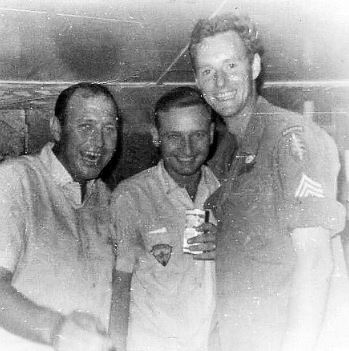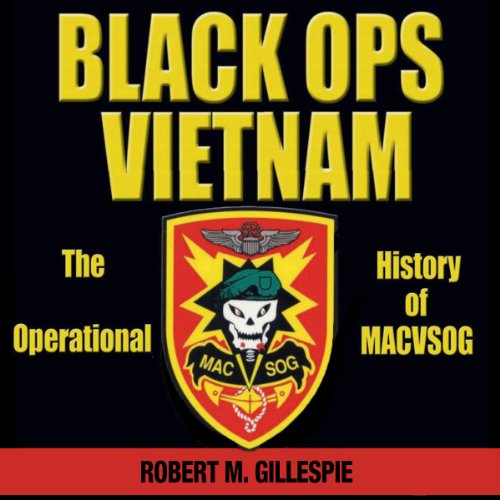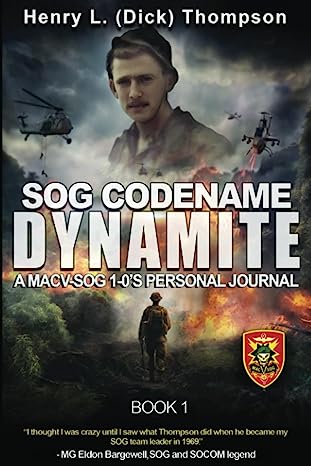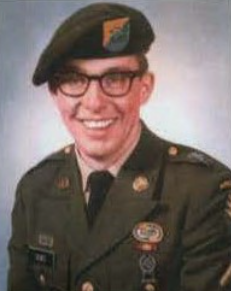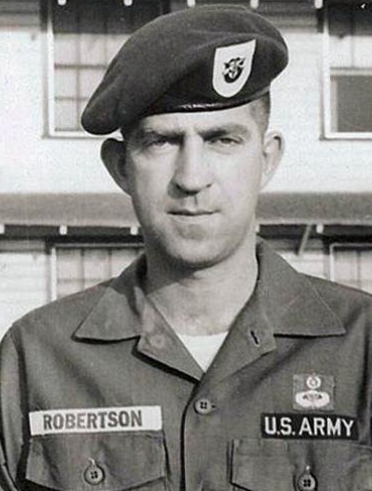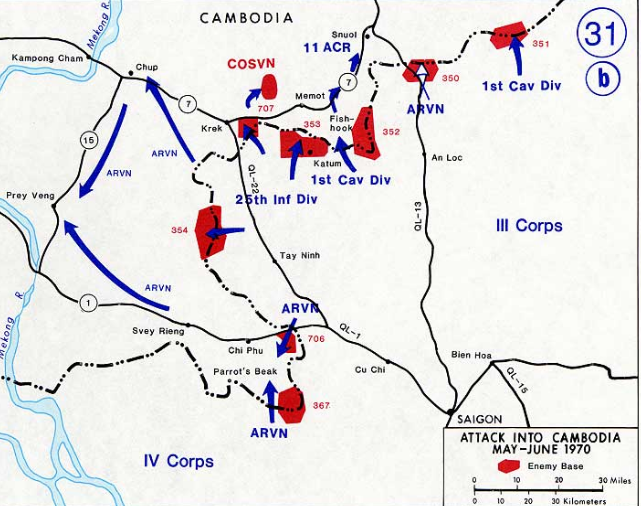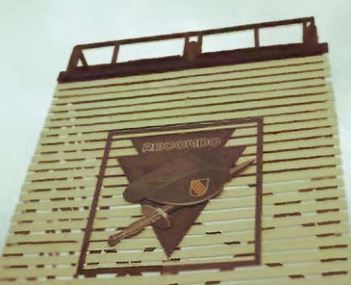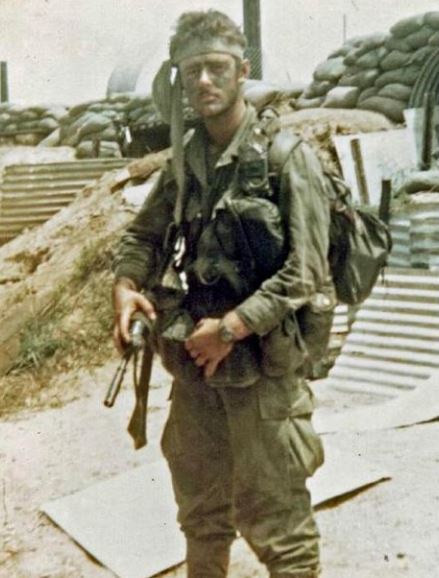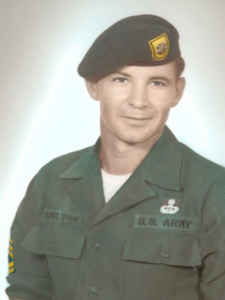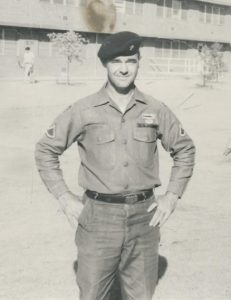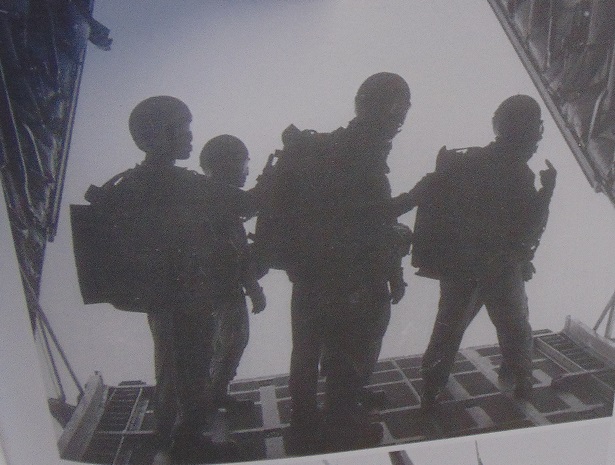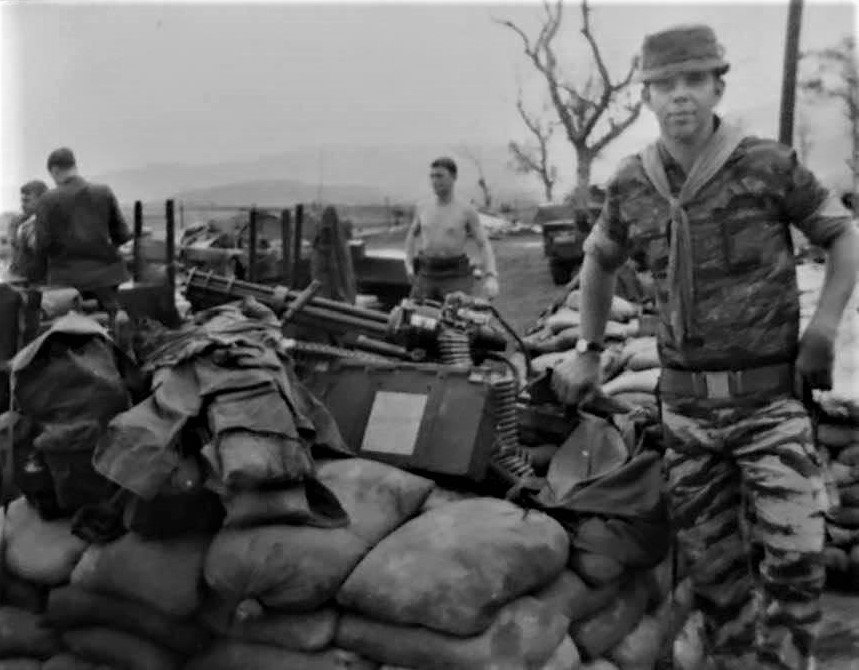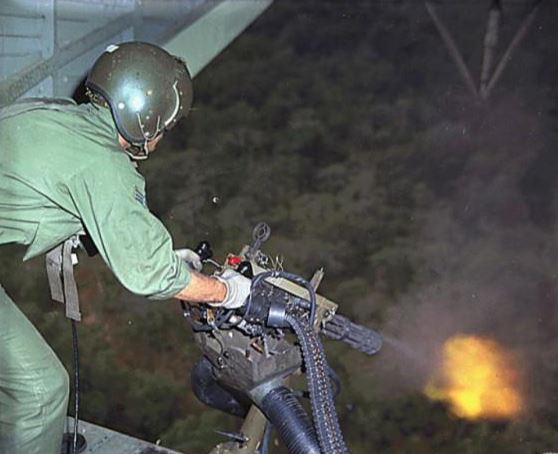I got on the helicopter parked at the North end of camp, and we flew west for an hour before landing at Loc Ninh. After the helicopter crew shut down the aircraft, one of the crew members took me to the TOC located not far from the helicopter-landing pad. The TOC was inside a large tent with several people running around taking care of business. A sergeant first class introduced himself. He said his name was Ray Stipsky, and he was the first sergeant for the Recon Company. Ray was a soft-spoken man about five feet ten inches tall, very muscular, and appeared to be about forty years old. Ray said the TOC was talking to a Recon Team on the radio, and the team was in enemy contact, and they had several causalities. Ray said he was trying to get a rescue team together. Ray told me to get my stuff ready to go in with the first helicopter. In the next few minutes, I found out there were four teams at the site, and they were all on the ground conducting reconnaissance (Recon) missions. Sergeant First Class Stipsky, two Como sergeants working in the TOC, nine Cambodian soldiers that were left behind from the Cambodian Company, and I were all that could be rounded up for that rescue mission.
There were three UH-1H transportation helicopters and two UH-1C Gunship helicopters left at the site, ready to go on the mission. The five aircraft crews and the thirteen of us met at the TOC for a briefing. We were told that one of our six-man Recon Teams was in contact with at least a company-size element of NVA soldiers. We were also told to expect more than just a company of NVA in that area. The Forward Air Controller (FAC) was in the area flying over the team, talking to them on the radio. The FAC is a U.S. Air Force pilot flying a small two-place airplane called an L-19 Bird Dog. Those airplanes provided the low-speed maneuverability and long endurance required to locate and maintain visual contact with Recon Teams and targets from the air. While in the briefing, I could hear the FAC relaying information from the Recon Team. The FAC said the team had broken contact and was evading the enemy and moving to a Landing Zone (LZ) the FAC had located for the team. The FAC instructed the TOC to launch the aircraft to extract the team. I was told along with the other twelve men that we would stand-down for the rescue mission but would be on standby until the team was recovered. The helicopters would be going on the mission to extract the team. It was almost dark, and I was thinking, “How are the helicopters going to find the team in the middle of the jungle?” Before I could say what I was thinking, Ray told me that I would be a “bellyman” on one of the helicopters. I said, “Okay, what is a bellyman?” A bellyman is a Special Forces soldier who rides behind the pilots in the Huey’s cargo bay. When the helicopter arrived at the LZ but couldn’t land because of tall grass or trees, the helicopter hovers over the team, and the bellyman throws out three ropes tied to the floor of the helicopter. The team members hang onto the rope, and the aircraft pulls the team out of the jungle on the ropes, sometimes called “the strings” or “the McGuire Rig.”
Because the helicopter is hovering over the team, the pilots cannot see the team, so the bellyman has to lie on his belly looking over the side of the helicopter, and he gives instructions to the pilot where to move the aircraft to stay over the team until the team can get on the McGuire Rig. The rig was a 120-foot rope with a six-foot loop at the end and a padded canvas seat. You rode it just like a playground swing seat. A Huey could carry four McGuire Rigs, two on each side, but they only use three. The fourth was a backup. Once the team is on the strings, the bellyman tells the pilot to rise vertically high enough so the men on the rig clear the jungle canopy, then the helicopter moves forward with the team hanging 120 feet below the aircraft. Also, all this is going to be in total darkness. I had no idea what I was going to do when I got there. I knew I would have the lives of three men in my hands hanging below a helicopter. I received a fast course on how to use the McGuire Rig, and then we were on our way to extract the team. We flew east into Cambodia, where the FAC contacted my helicopter pilot to guide us into the LZ. I was in the back of the aircraft with the door gunner and crew chief for the thirty-minute flight to the team. I had a headset on so I could hear the radio transmission from the FAC. After thirty minutes, I listened to the FAC giving instructions to my pilot, telling him what heading to fly to find the LZ. The FAC guided us right to the LZ, and the pilot made a landing approach straight into the LZ. We were able to see the flashlights of the team on the ground. As soon as we landed, I saw three men approaching the helicopter’s left side carrying three wounded men. I jumped out and helped everyone onto the helicopter. Simultaneously, the door gunner on the right side of the aircraft opened up with his M-60 machinegun. He was screaming that we were receiving fire from the tree line to our right. The other Huey and two Gunships were flying above us, and when they heard we were receiving fire, the two gunships started firing into the treeline to our right. All I could see was a wall of tracer bullets coming down like hot rain. With everyone on board, we departed under a hail of bullets. We got airborne, and the crew chief turned on the light inside the cabin to look after the wounded men. All three wounded men were in stable condition for what they had been through that day. Neither of the two Special Forces men were wounded, but three of the Civilian Irregular Defense Group (CIDG) soldiers had gunshot wounds to their arms and shoulders. One had lost a lot of blood. I helped the crew chief stop the bleeding on that soldier. We arrived at the launch site around 2100 hours, and we were met by medical personnel. I was totally exhausted and still shaking when I went back to the TOC for the debriefing. That was when I first noticed I had blood all over me.
After the debriefing ended around 2130 hours, Ray introduced me to my Recon Team. The team leader or the One-Zero SFC Perry, his One-One or assistant team leader SFC Cottingham, and three CIDG soldiers. A few minutes later, we were briefed on the next day’s mission, and we would be inserted at an LZ that the SFC Perry had looked at earlier that day. I hadn’t been at SIGMA for 24 hours, and I was going on my first recon mission.
Sergeant First Class Stipsky told me to find a place to put my stuff and get some sleep. I went to a tent and found an empty cot to rest my tired and scared body. I do not remember how long it took me to fall asleep, but it was not long.I will never forget my first night at SIGMA, and that was just the beginning.
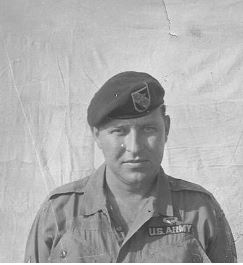
SGT. First Class Raymond F. Stipsky
Sergeant First Class Donald J. Perry
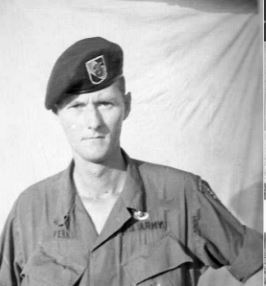
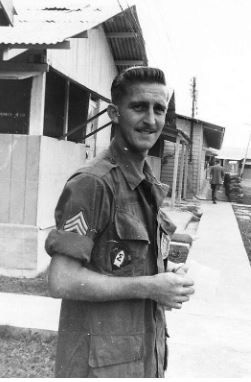
Sergeant First Class Jerry W. Cottingham
Ray, Manny, and Don in the club after several weeks at the forward launch site. The old guys took care of the kid. I was 24, and they were in their late 30s.
